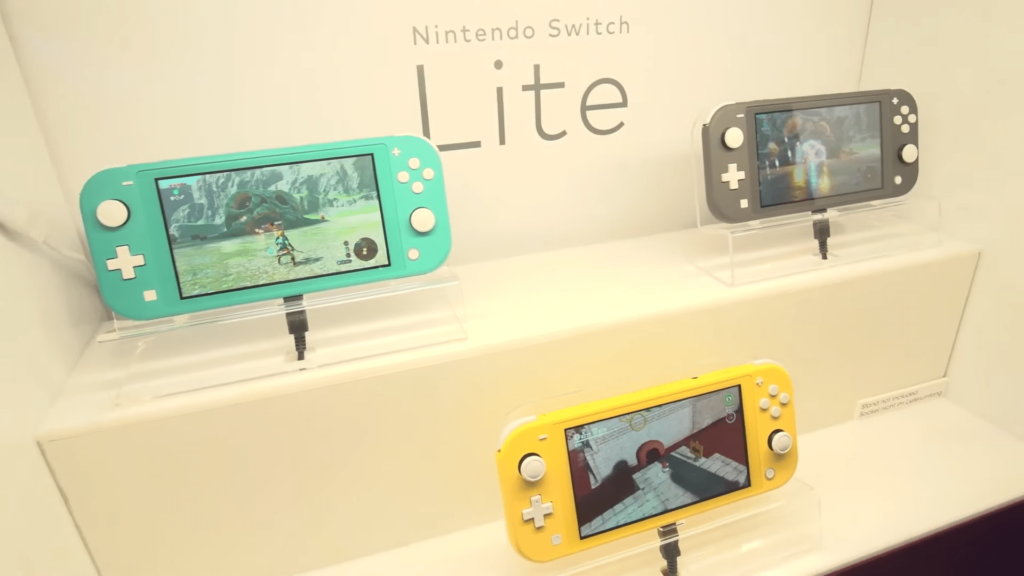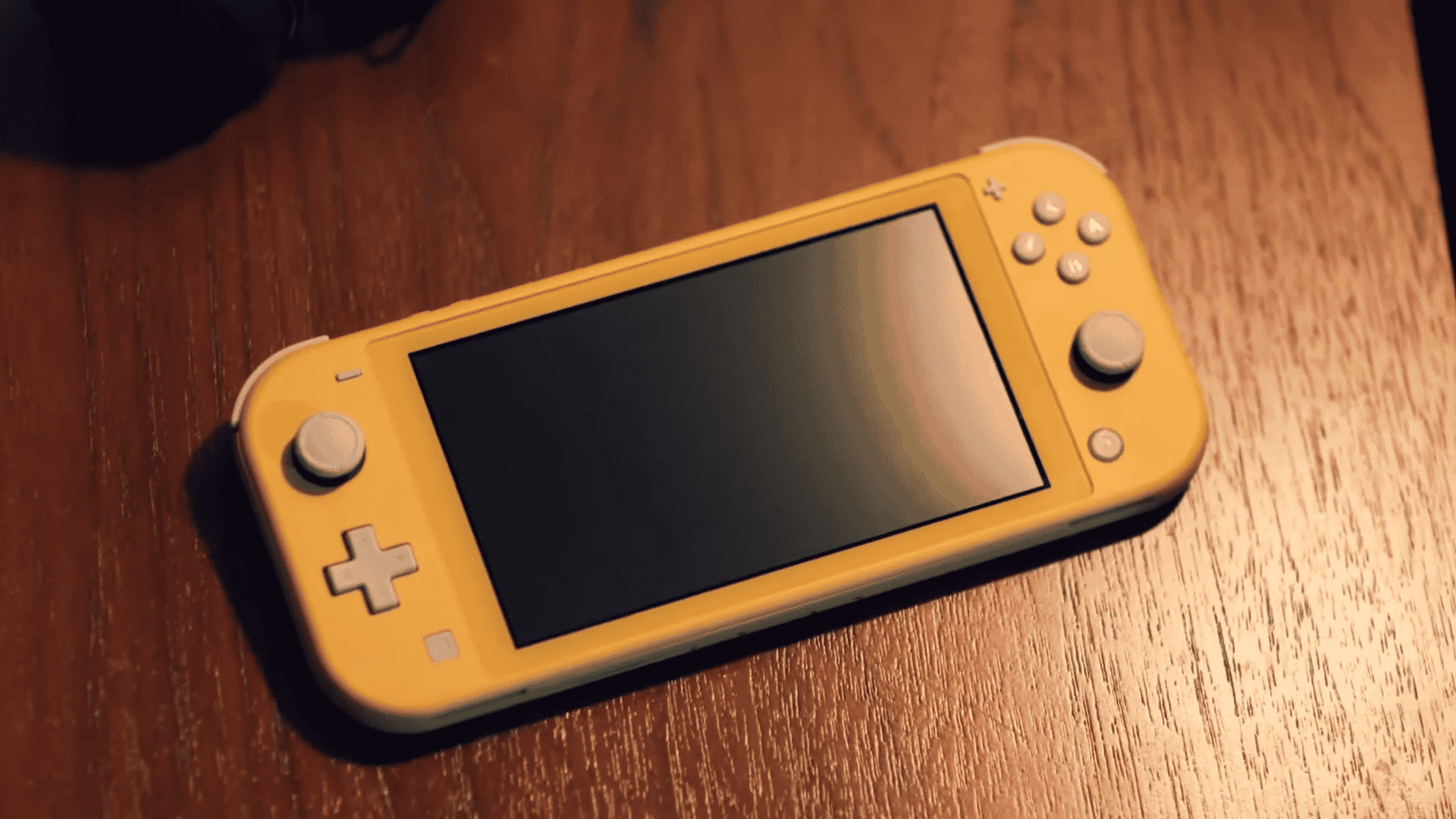Nintendo Switch Lite Review: The Best Hand-held Console
-
Easy portability
-
5-9 hours battery life
-
Online play and downloads
-
Ergonomic and stylish design
-
No docking or TV play capability
The Nintendo Switch Lite is that lovable younger sibling who comes in and steals all the limelight from its hard-working older sibling. The Switch Lite has been one of my favourite handheld consoles to try out, particularly when compared to older competitors like the Nintendo 2DS/3DS. It just seems to have it all – the lightweight body, the ergonomic design, not to mention speedy hardware and graphics that do its games justice.
As with all reviews, though, I had to put my own preferences aside and judge the Switch Lite from a new user’s point of view, unfamiliar with the console’s previous generations. To an unbiased eye, the Lite may fall short of its big brother, the Nintendo Switch. Someone looking for big-screen TV play with docking or co-op gameplay would need to steer clear of the Nintendo Switch Lite because docking and screen projection isn’t an option. There aren’t even any add-on cables or docks to give the Switch Lite the Nintendo Switch’s flexibility.
There’s a lot more to consider, though. Before you decide to buy (or not buy) a Switch Lite for yourself or as a gift for a loved one, make sure you’re putting your money into the console that’s a perfect fit.

What You Need to Know About the Nintendo Switch Lite
I like to get the obvious bits out of the way first, so you have some real context when making your decision. The Switch Lite is, simply put, a streamlined version of the Nintendo Switch released in 2017. The Switch Lite doesn’t have the ability to be docked, connected to an external screen, or have the controllers held separately. The Nintendo Switch offers these.
The Switch Lite has been available since September 2019.
Design Gets Full Marks
Let’s talk style because that’s probably the first thing that drew me toward the Lite instead of the Nintendo Switch. In all the promotional adverts you see people walking around holding this brightly coloured Switch, even sliding it into a pocket with ease. It seems the marketing team really knew their ideal audience—younger people on the move who want something that fits their lifestyle. The Lite’s design is its most engaging feature for this demographic.
As a young(ish) person on the move myself, the design was a key consideration. Firstly, in terms of pure aesthetics, the Nintendo Switch Lite offered something a little special. The colour choices are purposeful, with a selection of pastels in grey, pink, yellow, and turquoise. I like to think this is a throwback to the 1996-1998 Gameboys that came in similar colour options, which adds to the nostalgia factor even for those who only know the Gameboy from pop culture. And, personally, I’ve grown a bit tired of the traditional white, grey, or black options for pretty much all consoles—handheld or otherwise. A pop of colour (yellow in my case) lets me express a bit of my style and makes finding matching accessories a bit more fun.

There’s more to the Switch Lite’s design than just colours. It measures up pretty well, even compared to its chunkier sibling. Measuring in at 91.1mm x 208mm x 13.9mm and weighing 275g, the Switch Lite is smaller and (you guessed it) lighter than the Nintendo Switch. Consequently, the Switch Lite has a smaller LCD touch screen, measuring 5.5 inches but still giving you 1280 x 720 pixels.
If you compare that to the original Switch’s 6.2-inch screen area, the Lite brings you a pixel density of 267 pixels per inch which is noticeably sharper than the Switch’s 236 pixels per inch. Talk about good things come in small packages!
On this theme, the Nintendo Switch Lite obviously has some ergonomic advantages. You can comfortably hold this device while you’re on the train, in the car or sitting in bed. The Nintendo Switch is notoriously a bit awkward to hold in its portable form, making it the superior option for docked play, but not for sitting around comfortably or gaming to kill time while you’re out and about.
Performance as Well as Style
Moving on from looks, let’s get to the substance.
The basic statistics for the Nintendo Switch Lite are promising from the get-go. The Nintendo Switch original console provided, realistically, around 3-6 hours of battery life. The Switch Lite reliably offers 3-7 hours, depending on usage. However, I have to add here that as of July 2019, an updated Nintendo Switch model was released with an improved 5-9 hours of battery life.
If you were hoping for all the same features as Nintendo Switch, then you may be disappointed. Most significantly, the Switch Lite does not offer HD Rumble or IR Motion Capture.
The HD Rumble was a feature the Nintendo Switch really sold itself on, portraying it as being able to transmit the sensations of the game to the controller, instead of the regular vibrations you’d normally get. I don’t count this as a feature to be missed, in all honesty, as the HD Rumble isn’t all it was cracked up to be—and is just a slightly finer tuned version of the previous Rumble.
However, the IR Motion Camera is a bit more high-tech and might be a cool feature that you’ll miss in the Switch Lite. As Nintendo developers describe it, the IR Motion Camera is where “the Joy-Con emits a beam of invisible infrared light that is reflected back by these markers, enabling the camera to read their movement. By making it like this we can get data when things move without needing any additional electronic components”. Essentially, it lets you interact with games more realistically, as if you were really in them. I feel this could have been adapted and put into the Nintendo Switch Lite to some degree.
“the Joy-Con emits a beam of invisible infrared light that is reflected back by these markers, enabling the camera to read their movement. By making it like this we can get data when things move without needing any additional electronic components”.
Nintendo
You’ll need to think about the cost of accessories. While you can’t play some family or party games to their full extent, you can buy more joy-cons to get more people in on a multiplayer game. But, you’ll need to factor in the cost of those controllers and their charging hubs.
Having said all that, my personal experience of the Nintendo Switch Lite’s performance is that it works perfectly. Games run smoothly even when under pressure with big graphical loads.
Game Choices for the Nintendo Switch Lite
There’s a huge collection of games available for the Nintendo Switch consoles. The good news is that most of these games are playable on the Switch Lite without any issues. Because the Nintendo Switch Lite can only be used for handheld modes in games, you might want to do your research on which games will make the most of the handheld gameplay. Avoid games made primarily for docked play or in a larger group that would require connection to a bigger screen.

To list a few, some of your game options include the obvious ones such as Animal Crossing New Horizons and Zelda Breath of the Wild. Other noteworthy titles include Pokémon Shield, Stardew Valley, Splatoon 2. Then there’s Clubhouse Games for a bit of variety.
It’s easier to list the games that need to be played on the Nintendo Switch for full enjoyment. These games aren’t playable to their full capability on the Nintendo Switch Lite:
- Super Mario Party.
- 1-2-Switch.
- Nintendo Labo/LaboVR.
- Just Dance (any version)
- Fitness Boxing.
- Ring Fit Adventure.
- Surgeon Simulator CPR.
The fun thing about the Nintendo Switch Lite is that you can still easily browse the Nintendo Eshop and find hundreds of titles that you might like. This isn’t exclusive to the Switch Lite, but it’s certainly still a plus. It’s worth mentioning the Nintendo Switch Online subscription. Using this gives you a tonne more access to online games and subscriber offers, not to mention it’s crucial if you want to utilise online-play features in supported games.
All in all, the Nintendo Switch Lite impressed me with its versatility, performance, and style. The smaller price tag is something to be considered when compared to other consoles. Despite being a good bit cheaper, you get much the same gameplay ability.
For gamers on the go, the Nintendo Switch Lite is an excellent all-round choice.

